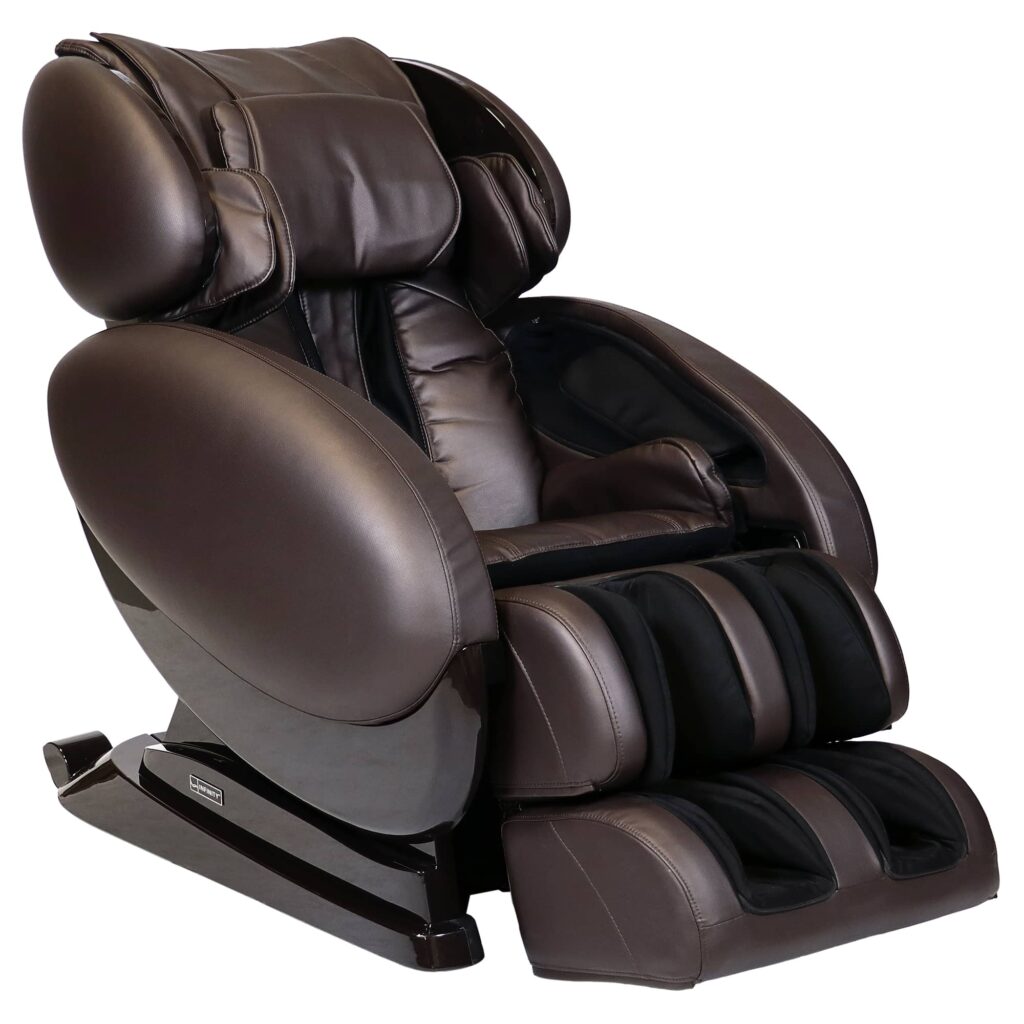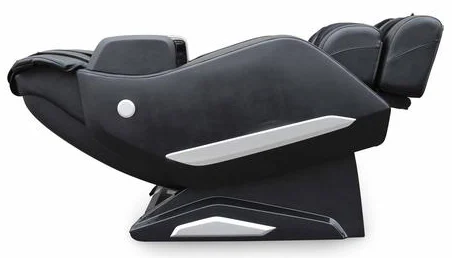
Massage Chair Help With Sciatica refers to the pain that radiates along the path of the sciatic nerve, which branches from your lower back through your hips and buttocks and down each leg. Typically, sciatica affects only one side of your body. It’s a condition often caused by an irritation of the root(s) of the lower lumbar and lumbosacral spine.
Massage chairs, with their advanced technology and design, can target specific areas of the body, including the lower back and legs, where the sciatic nerve often gets compressed or irritated. By providing consistent pressure and kneading motions, massage chairs can help alleviate the tension and pain associated with sciatica. The gentle movements and heat therapy offered by some chairs can also promote blood circulation, which aids in the healing process and provides relief from the discomfort of sciatica.
Benefits of Massage Chairs for Sciatica

1. Alleviation of Muscle Tension: One of the primary benefits of massage chairs is their ability to deeply penetrate and relax tight muscles. For those suffering from sciatica, this can be particularly beneficial as tense muscles in the lower back, hips, and buttocks can exacerbate the pain. By soothing these muscles, massage chairs can help reduce the pressure on the sciatic nerve, offering relief from the sharp, radiating pain.
2. Endorphin Release: Endorphins are the body’s natural painkillers. When stimulated through massage, the body releases these chemicals, which can significantly boost one’s pain threshold. As a result, individuals with sciatica can experience a reduction in pain intensity after using a massage chair. The release of endorphins not only helps in pain management but also promotes a sense of well-being and relaxation.
Types of Massage Chairs

1. Deep Tissue Massage Chairs: These chairs are designed to target the deeper layers of muscles and connective tissue. They use strong, concentrated pressure to relieve chronic muscle tension and knots. For those with sciatica, a deep tissue massage chair can help address the underlying muscle tightness that might be contributing to nerve compression.
2. Swedish Massage Chairs: Known for its relaxation benefits, Swedish massage chairs utilize a combination of long gliding strokes, kneading, friction, tapping, and gentle stretching. This type of massage can be particularly beneficial for those with sciatica as it promotes blood flow to the affected areas, aiding in the healing process and reducing inflammation.
3. Neuromuscular Massage Chairs: Focusing on specific trigger points in the muscles, neuromuscular massage chairs aim to balance the central nervous system and the musculoskeletal system. By targeting these trigger points, these chairs can help release muscle spasms and reduce pain signals sent to the brain, making them a suitable choice for sciatica sufferers.
How to Choose the Right Massage Chair for Sciatica
Factors to Consider When Selecting a Massage Chair
Targeted Relief: Ensure the chair has features that specifically target the lower back, hips, and legs, where sciatic pain is most prevalent.
Intensity Levels: The chair should offer adjustable intensity levels to cater to individual pain thresholds and preferences.
Massage Techniques: Look for a chair that offers a variety of massage techniques, such as deep tissue, Swedish, and neuromuscular, to address different aspects of sciatica.
Heat Therapy: Some chairs come with built-in heat therapy, which can be beneficial for sciatica as it promotes blood flow and relaxes muscles.
Customizability: A good chair should allow users to customize their massage experience, focusing on specific areas and adjusting settings as needed.
Ergonomics and Comfort: The design of the chair should support the natural curve of the spine and be comfortable for extended use.
Budget: While it’s essential to invest in a quality chair, it’s also crucial to find one that fits within your budget. Remember, the most expensive option isn’t always the best for your specific needs.
Tips for Finding the Right Therapist
Specialization: Seek therapists who have experience or specialization in treating sciatica or related conditions.
Certifications: Ensure the therapist has the necessary certifications and training in massage therapy.
Recommendations: Personal recommendations from friends, family, or healthcare professionals can be invaluable.
Reviews and Testimonials: Look for therapists with positive reviews and testimonials from previous clients.
Consultation: Before committing, consider having a consultation with the therapist to discuss your specific needs and concerns.
Comfort Level: It’s essential to feel comfortable and trust your therapist, so ensure there’s good communication and a feeling of safety during sessions.
Continuous Learning: A good therapist will often engage in continuous learning to stay updated with the latest techniques and treatments.
Myofascial Release Chairs: Myofascial release focuses on releasing tension in the fascia, the thin sheath of fibrous tissue that encloses the muscles. When the fascia becomes tight or restricted, it can contribute to pain and reduced mobility. Chairs designed for myofascial release use gentle, sustained pressure to stretch and soften the fascia, which can be beneficial for those with sciatica by reducing pressure on the sciatic nerve.
Checkout the Best Guide to 2D vs 3D vs 4D Massage Chairs
Massage Chair Features for Sciatica

When searching for a massage chair specifically to address sciatica, certain features can make a significant difference in providing relief. Here’s a breakdown of the essential features to consider.
1.Targeted Massage Programs
Chairs that offer specialized programs targeting the lower back, hips, and thighs can provide direct relief to the areas most affected by sciatica.
2. Lumbar Support
A chair with robust lumbar support can help alleviate pressure on the sciatic nerve, offering immediate relief from pain.
3. Heat Therapy
Heat can help relax tight muscles and increase blood flow to the affected area, promoting healing and reducing inflammation. Look for chairs with adjustable heat settings for the lumbar region and thighs.
4. Zero Gravity Positioning
This feature allows the user to recline in a position that distributes weight evenly, reducing pressure on the spine and allowing for a deeper and more therapeutic massage.
5. Deep Tissue Massage Capability
Deep tissue massage can reach the inner layers of muscles, helping to release tension and knots that might be contributing to sciatic pain.
6. Air Compression Massage
Airbags that inflate and deflate can provide a compression massage, which can be particularly beneficial for the hips and thighs, areas often affected by sciatic pain.
7.Customizability
The ability to adjust the intensity, speed, and focus area of the massage ensures that the user can target the sciatic pain specifically and adjust settings based on their comfort level.
8. Stretching Features
Some chairs offer a stretching or “traction” function that can help elongate the spine and relieve pressure on the sciatic nerve.
9. High-Quality Rollers
3D or 4D rollers can move in multiple directions, mimicking the hands of a massage therapist, and providing a more in-depth and therapeutic massage.
10. Memory Settings
If multiple people are using the chair or if you find a particular setting combination that works for you, memory settings can be beneficial to quickly get back to your preferred massage mode.
11. Safety Features
Auto shut-off, overheat protection, and child safety locks are essential, especially if you’re using the chair frequently or for extended sessions.
12. Ergonomic Design
The chair should be designed to support the natural curve of the spine, ensuring comfort and effectiveness during the massage.
FAQ’s
What is sciatica?
Sciatica is a term used to describe pain that radiates along the path of the sciatic nerve, which branches from the lower back through the hips and buttocks and down each leg. It typically affects only one side of the body.
How does a massage chair help with sciatica?
A massage chair can help alleviate sciatic pain by providing targeted massage to the lower back and gluteal region. This can help relax tight muscles, improve blood circulation, and promote healing in the affected area.
Are there specific massage chair settings or programs best suited for sciatica relief?
Yes, many massage chairs come with specialized programs designed for lower back pain or sciatica relief. Features like zero-gravity positioning, deep tissue massage, and heat therapy can be particularly beneficial.
How often should I use a massage chair for sciatica?
While using a massage chair can provide relief, it’s essential to use it in moderation. Overuse can lead to muscle soreness. It’s recommended to start with shorter sessions and gradually increase as your body gets accustomed. Always consult with a healthcare professional for personalized advice.
Are there any risks associated with using a massage chair for sciatica?
While massage chairs are generally safe, it’s essential to ensure the intensity and type of massage are appropriate for your condition. Too much pressure or the wrong kind of massage can exacerbate symptoms. Always start with a gentle setting and adjust as needed.
Can a massage chair replace professional therapeutic massages for sciatica?
While massage chairs offer convenience and can provide relief, they may not replace the expertise and personalized touch of a trained massage therapist. For chronic or severe sciatica, it’s recommended to seek professional therapeutic massages in conjunction with using a massage chair.
Are there other complementary therapies or exercises I should consider alongside using a massage chair for sciatica?
Yes, alongside massage, physical therapy, stretching exercises, and maintaining a proper posture can help alleviate sciatic pain. It’s also beneficial to avoid prolonged sitting and to incorporate regular physical activity into your routine.
